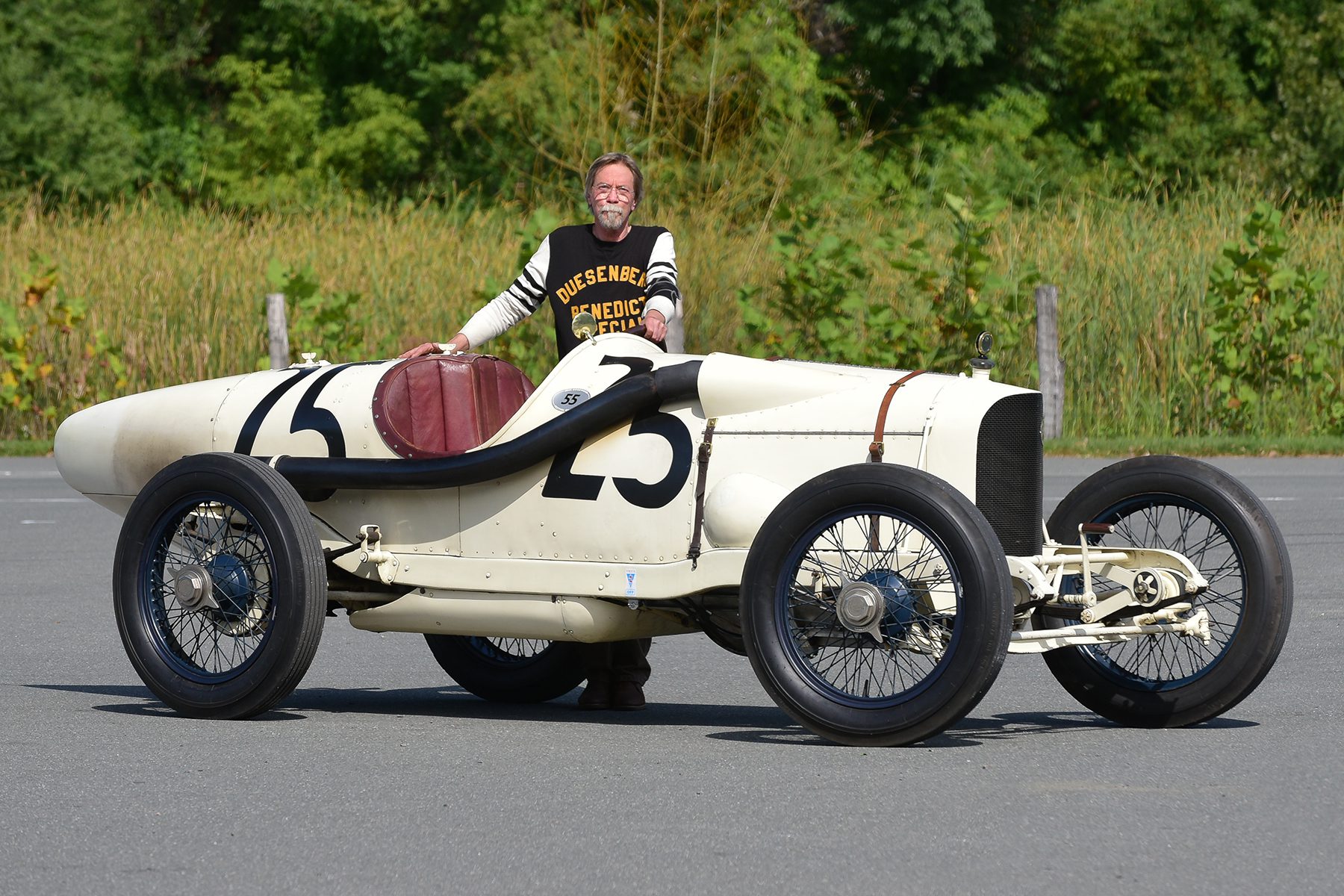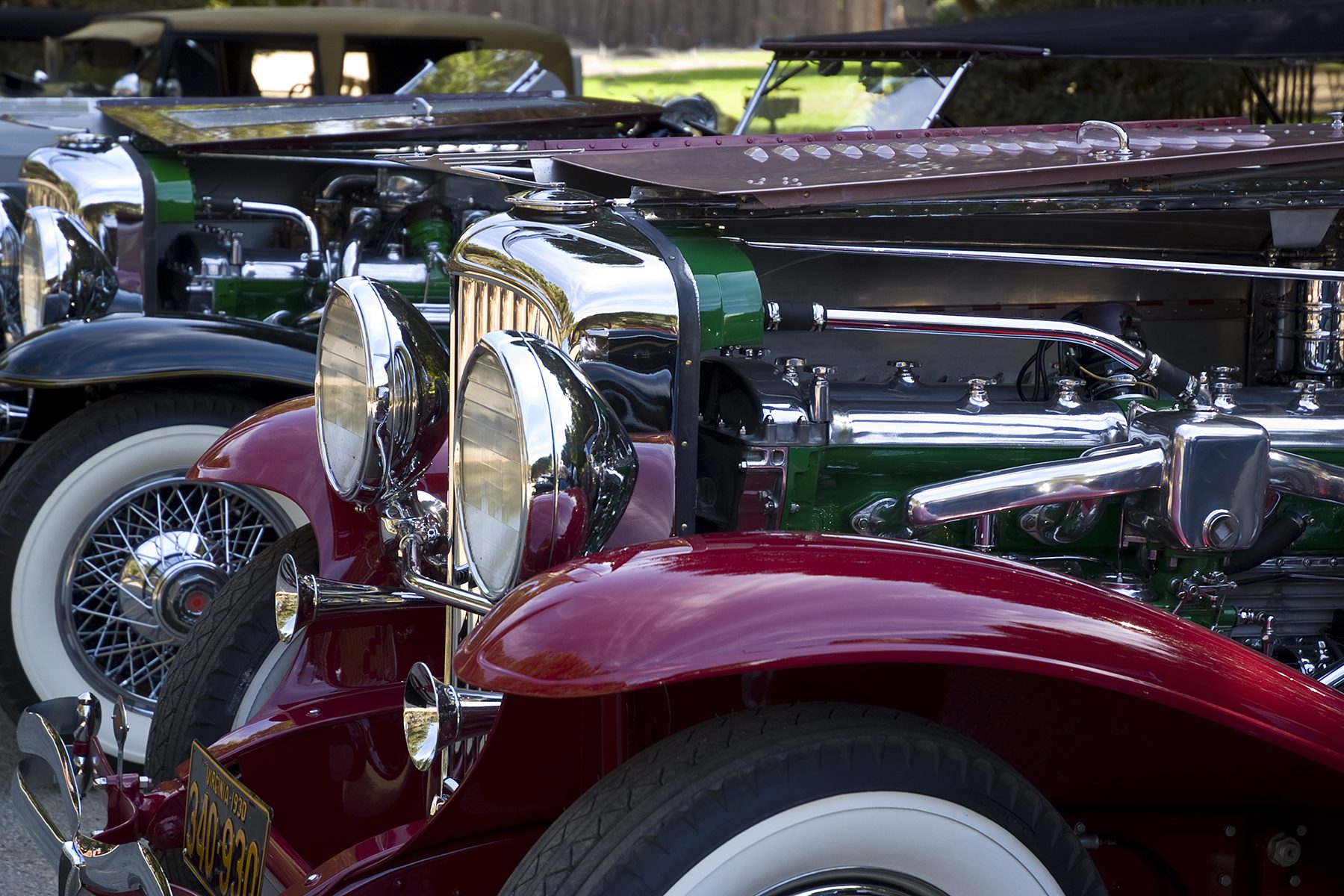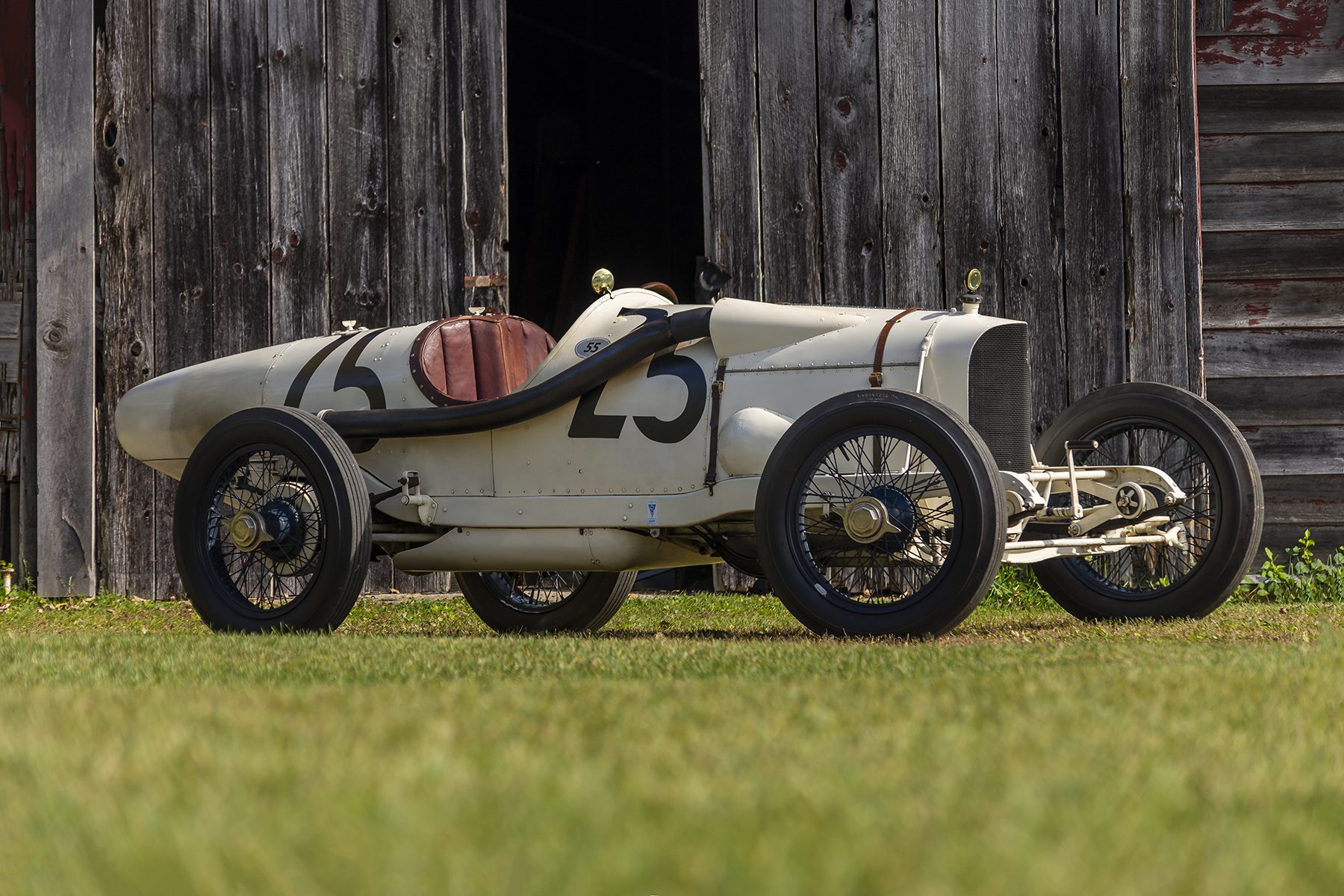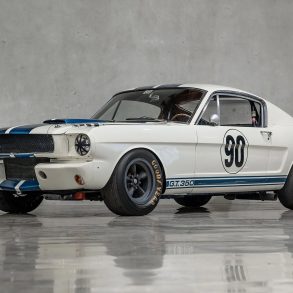Words by Sean Smith / Photos by Sean Smith & Michael DiPleco
When you hear the word Duesenberg you have images of massive luxury machines created for the captains of industries or robber barons. Your imagination might also conjure up large two-door roadsters piloted by stars of the silver screen. These lime green engined behemoths were tremendously expensive. Owners of these cars breathed rarefied air.
All those swells could offer up thanks to a couple of immigrant brothers from Lippe, Germany.
Frederick was born in 1876 with his brother August following in 1879. In the mid-1880s, the family left Germany and settled in Rockford, Iowa.
Intrigued with mechanical things, Fred was helping with the family finances by repairing farm equipment. The brothers also became part of the big bicycle craze of the time. Fred started working on them, and he then became a racer and finally a manufacturer. From there, he moved on to motorcycles.
In 1903 Fred’s bicycle empire had crumbled. The brothers opened a garage and were getting into racing cars at that time. A well-to-do lawyer Edward Mason learned about what the brothers were doing and put some money behind them; from that partnership, the Mason automobile was created and arrived in 1906 sporting a potent two-cylinder engine.
In 1913 Fred and Augie left Iowa and opened the Duesenberg Motor Company in Minnesota. They used leftover Mason double-drop frames and refined their unique “walking-beam” engine known for its eight 16-inch long rocker arms and horizontal valves and went racing.
Racing wisdom called for big engines in oversized frames, but the brothers had created a nimble and competitive racer; soon, members of the motoring world were taking notice. In 1913 Willie Haupt drove a Mason to a 10th place finish. The Duesenbergs managed to do this with very little money, although, by 1914, the three-car team had notched up some impressive wins on the A.A.A. circuit.
To make ends meet, they sold engines to other competitors, and through that, they landed another patron, the industrialist James Harbeck. For him, Fred and Augie produced marine engines. This work provided the brothers with the finances to redesign their race engine and chassis.
For the 1915 season, the Brothers improved handling by shortening the rear of the Mason frame added new rear spring hangers and shorter leaf springs. They replaced the earlier 8-valve engine with an all-new 16-valve 298.2 cubic inch “walking-beam” four, just under the 300 CI engine displacement limit the A.A.A. sanctioning body put forth.
In 1916 Wilber D’Arlene finished in second place at the 1916 Indianapolis race with the feature car. At the end of the 1916 racing season, the Duesenbergs sold all of the four-cylinder cars to make way for the new SOHC 8-cylinder Team cars. James A. Benedict from Katonah, New York, a riding mechanic for the Duesenberg team, purchased the racer D’Arlene drove at Indy.
With the Duesenberg re-named the “Benedict Special,” he jumped in the deep end by taking on top professional drivers and the latest race cars at the Sheepshead Bay Speedway in the fall of 1916. After 100 hard-fought miles on the board track, Benedict found himself in 6th place at the checkered flag. From there, he drove his racer home to Katonah. He didn’t race the car again until the following fall in Sheepshead Bay.
At the “Colossus of Brooklyn,” the Benedict Special was really showing its age. It was up against the latest Duesenbergs, Frontenacs, Peugeots, and V-12 Packards, only placing 10th overall. For him, big-time racing was in his rearview mirror, although dirt track racing was a different matter. James took on all comers at the Danbury Fair’s 1/2 mile dirt oval and won.
After the 1917 race season, competition was suspended for the duration of World War 1. In 1919 James and the Benedict Special were back in action racing on the half-mile at Millerton, NY, and collected a large part of the prize money. The duo placed very well in a few more races in 1920, but James was ready for something with more power and performance. So the Duesy went on to a new caretaker Louie Hoyt who had two bears named Duesenberg and Reo named after the car and his dealership.
Lou raced the Duesenberg up and down the eastern seaboard. In the mid-20s, he stopped competing but made appearances at carnivals with his racer and bears for all to see. Lou put the car away in a barn in the late-1920s and died in the 30s.
The car languished in the barn until it was unearthed on the 4th of July 1941 by Fred Roe and Charlie Fisher. The pair made a deal with Lou’s widow and flat-towed it back to Boston behind a 1926 Cadillac. They got the car back in racing shape, and Charlie was able to run the car a few times before WWII at Thompson. After the war, Charlie had a bit more seat time before the racer was sold to Alec Ulmann.
Ulman didn’t have the Duesenberg for long before he passed it on to Henry Austin Clark, Who put it in his Long Island Automotive Museum. Not knowing the whole history of the car, Clark painted it in the color scheme of Eddie Rickenbaker’s 1914 racer. He also used it as a promotional tool by driving it around the area.
The following custodian Bob Sutherland restored the Duesy and had a replacement aerodynamic tail fashioned to take the place of the damaged and missing original. Sutherland had fun with the car and then let racing car collector Joseph Freeman, the current owner race it at the Monterey Historics in 1993. In the following twenty-five-plus years, he has run it in quite a few vintage race meets around the U.S. and at the Goodwood Festival of Speed in 2005.
In the mid-1990s, Freeman turned the racer over to David Greenlees of Brattleboro, Vermont, for race prep and further maintenance. David began by making new brake drums and refining some other things, including some of the racer’s cosmetics. David, over time, did a total rebuild of the chassis along with the transmission and the front and rear axles.
A significant undertaking was recreating a new cylinder block for the “walking-beam” 16-valve four-cylinder motor. The Duesenberg brothers had intentionally cast it relatively thin to save weight. After seventy years of competition and corrosion in the water jackets, the material between one of the cylinder walls and combustion chamber cracked into the jacket. The other cylinders were not far behind, so the prudent thing to do was cast and machine a new one.
David went in search of a pattern maker that would work with him and came across a family-owned foundry that had been in business since the 1840s; they were willing to attempt pouring the casting. Several modifications to the patterns to solve the problems caused by the 2500 degree liquid iron poured into the cores warped a few thin and intricate sand cores. Two prototype blocks were cast and sacrificed by being cut up for inspection before Greenlees was convinced the next casting would be usable. David took the newly minted block, machined it, and rebuilt the entire engine.
The Duesenberg was ready to roll for the 2002 Vintage Indy 500 Celebration, and since then, it has been entered and driven by Joseph Freeman at race meets around the country. And thanks to the masterful hands of David Greenlees, this 1915 racer Augie and Fred Duesenberg built is ready for another 100 years of fun.
























A very enjoyable, well written and well-researched story. Thank you Sean.
Hope they cast a few extra blocks while they were at it.
This wasn’t my first rodeo with making new blocks. The block in the car is #3 and I had #4 cast as an insurance policy just in case. Before machining #3 I checked both castings and used it because it was the best one of the pair after checking both with x-ray, magnaflux, a sonic thickness tester, and pressure testing.